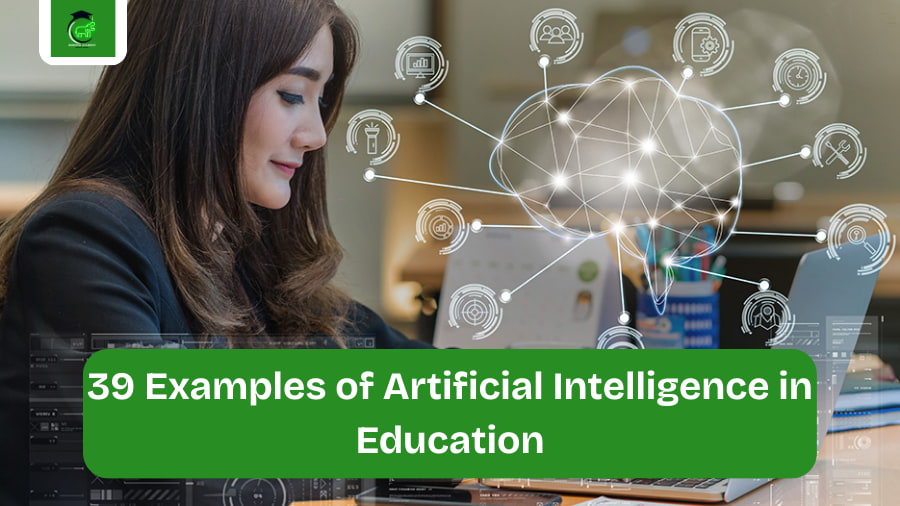Though it may sound like something from a sci-fi film, artificial intelligence is already permeating many aspects of our lives, particularly in the field of education. You may not even be aware of it, but artificial intelligence is rapidly altering how teachers instruct, how students learn, and how schools function. Artificial intelligence in education is not meant to take the place of educators. AI, on the other hand, is a potent new tool that makes learning more enjoyable and individualized for students while also assisting teachers in working more efficiently. It is about using technology to address long-lasting issues, such as ensuring that all students, regardless of class size, receive the assistance they require.
Table of Contents
We are going to look at 39 examples of AI in education here. From assisting students with their homework to facilitating parents’ search for the ideal school, we will observe how this technology is already having an impact. We will also examine the mesmerizing future of AI in education and discuss its benefits and drawbacks.
The Basics – Understanding AI in Education
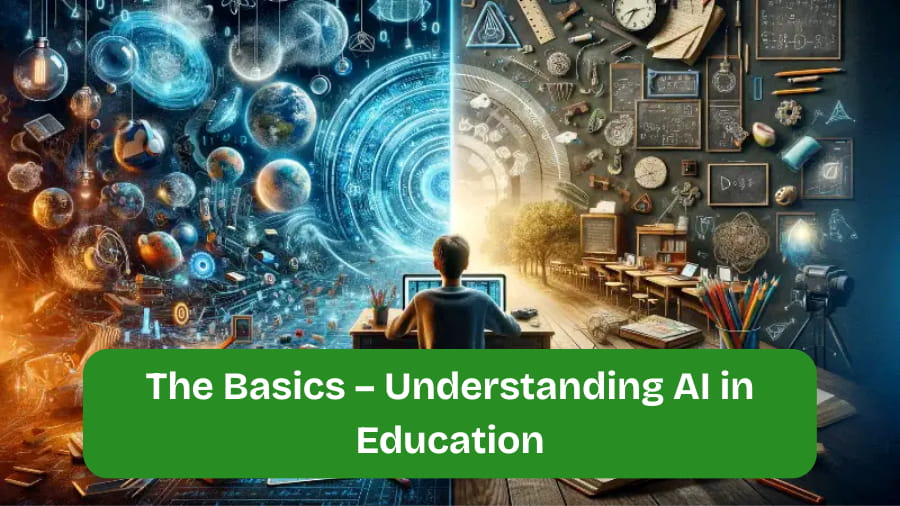
Let’s quickly clarify what we mean by artificial intelligence in the classroom before moving on to the examples. A few key concepts can be used to categorize the various types of artificial intelligence in education –
1. Personalized AI – AI that functions as a personal tutor is known as personalized AI. It determines a student’s learning path based on their strengths and weaknesses.
2. Support AI – This type of AI aids educators and school personnel. It completes monotonous, repetitive tasks so that people can concentrate on more significant tasks.
3. Insightful AI – AI that analyzes large amounts of data to identify trends. It can assist schools in assessing students’ performance and identifying those who may require additional support.
The importance of artificial intelligence in education makes it possible for us to do things that were previously impossible. It increases the effectiveness, efficiency, and accessibility of learning for all.
39 Examples of AI in Education
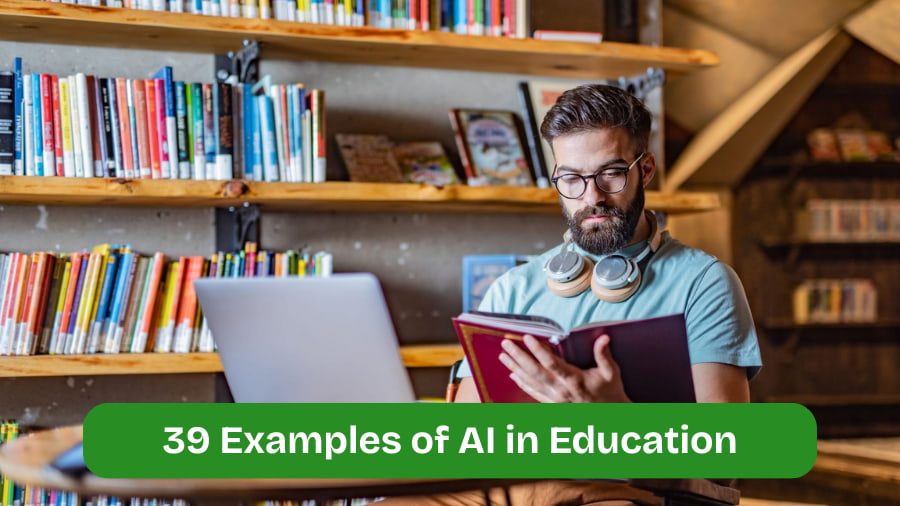
Here is a list of 39 examples of how AI is being utilized in education nowadays, classified to make it simple to understand.
A. Personalized Learning for Students (Examples 1-13)
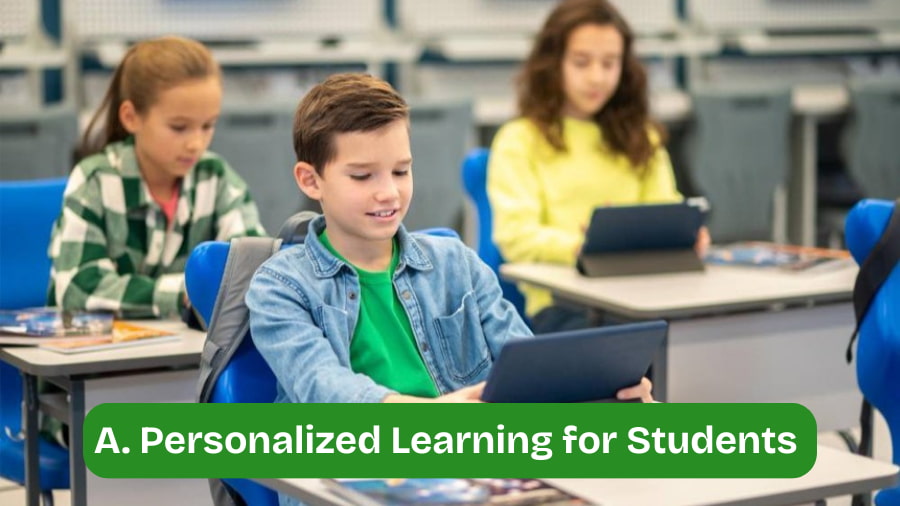
This is one of the most typical and strong uses of artificial intelligence. It makes learning remarkable for every student.
1. Adaptive Learning Platforms – Online programs alter the level of difficulty of questions according to a student’s performance. The platform offers more assistance and simpler questions for students who are having trouble. It presents more difficult challenges if they are performing well.
2. AI-Powered Tutors – Imagine a round-the-clock robot tutor. These systems can provide practice problems, respond to inquiries from students, and break down difficult subjects into manageable chunks.
3. Real-time Feedback – AI is able to instantly fix math, essay, and homework issues. This allows students to learn from their mistakes immediately and eliminates the need for them to wait for a teacher to grade their work.
4. Personalized Study Plans – AI can evaluate a student’s performance and generate a weekly study schedule that targets the areas in which they require the greatest support.
5. Intelligent Content Suggestion – Similar to how Netflix recommends films, AI can recommend books, articles, and instructional videos that are pertinent to a student’s interests and learning objectives.
6. Interactive Language Learning – AI-powered interactive language learning makes learning a new language quicker and more efficient by listening to a student speak and correcting their grammar and pronunciation in real time.
7. Virtual Labs – Students can perform experiments in virtual science labs powered by AI without the need for costly equipment or any safety concerns.
8. Gamified Learning – AI has the ability to make learning more like a game, complete with tailored tasks and incentives to keep students interested and inspired.
9. Predicting Student Success – AI can use test results and previous grades to forecast a student’s future performance, enabling teachers to provide support before a student falls behind.
10. Identifying Learning Gaps – AI can identify the precise skills that a student lacks from prior learning years, enabling teachers to fill in those gaps.
11. Automated Reading and Comprehension Tools – AI is able to determine a student’s reading proficiency and suggest books that are just the right amount of difficulty.
12. Virtual Reality (VR) Field Trips – AI and VR can be used to create incredible virtual field trips that let students explore space or ancient ruins from the comfort of their classroom.
13. Helping Students with Disabilities – By converting text to speech or offering closed captions for videos, AI can assist students who have vision or hearing issues.
B. Helping Teachers Work Smarter (Examples 14-25)
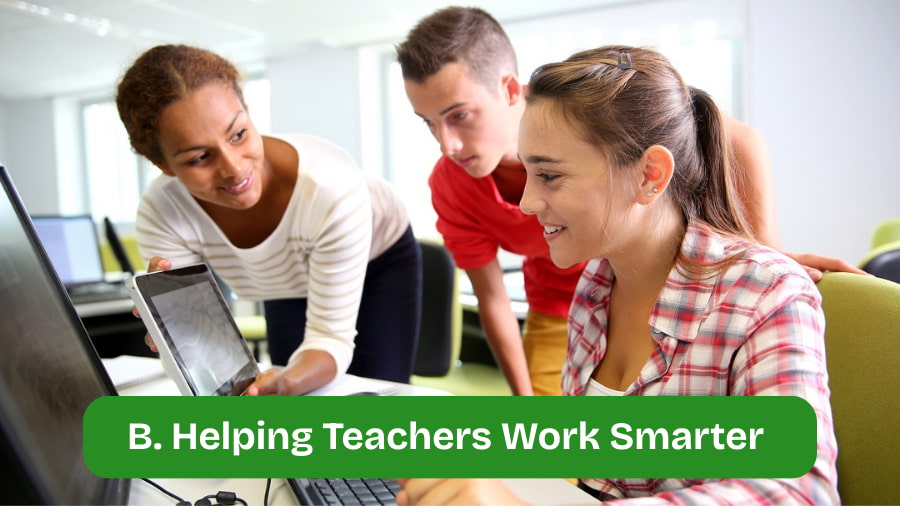
Teachers are overburdened. Many repetitive tasks can be handled by AI.
14. Automated Grading – AI can grade simple essays and multiple-choice exams automatically, saving teachers hours of time.
15. Developing Tests and Quizzes – AI can create new tests and quiz questions based on the course content, saving teachers the time and effort of creating them from scratch.
16. Attendance Tracking – AI is able to automatically record attendance in a classroom by using facial recognition.
17. Parent Communication – AI is capable of creating customized emails that provide parents with an overview of their child’s development and forthcoming assignments.
18. Lesson Planning – Using a teacher’s curriculum and the needs of their students, AI can recommend lesson plans and instructional materials.
19. Plagiarism Detection – To ensure academic integrity, AI is already frequently used to check student papers for plagiarism.
20. Teacher Tutoring – AI can provide teachers with professional development training to help them advance their abilities.
21. Analyzing Class Performance – AI is able to determine which subjects require more attention from teachers by analyzing how a class as a whole is performing on a given subject.
22. Automated Scheduling – AI is able to generate intricate class and teacher schedules that ensure everyone has access to what they need.
23. Locating Resources – An AI assistant can locate worksheets, videos, and articles on any subject a teacher is going to cover in a short amount of time.
24. Virtual Teaching Assistants – AI chatbots can respond to frequently asked questions by students regarding assignments or class rules, saving teachers from having to repeatedly respond to the same queries.
25. Content Creation – Using a teacher’s notes and ideas as a guide, AI can produce interactive lessons and presentations.
C. Improving School Operations and Management (Examples 26-31)
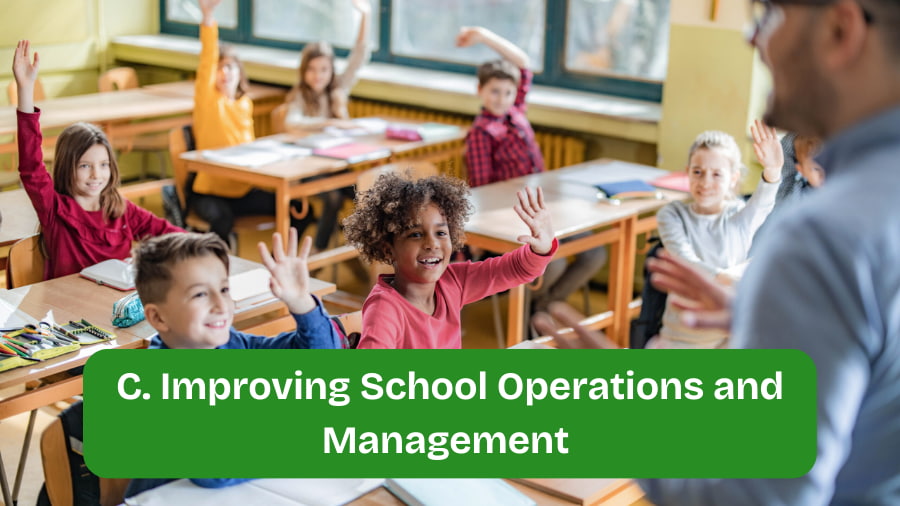
AI has the potential to improve school operations overall.
26. Automated Admissions – AI can assist with processing applications to schools and even identify the most successful candidates.
27. Choosing the Correct School – AI is a fantastic tool in this field. AI could be used by a website that lists schools, such as EDHIPPO ACADEMY PRIVATE LIMITED, to assist parents in selecting the best school for their child. An AI can recommend the best schools for a child based on their needs, interests, and location. This is an excellent example of how AI is being used in education.
28. Campus Security – To increase safety, AI-powered cameras can identify anomalous activity or unauthorized individuals on school property.
29. Managing Budgets – AI is able to examine school budgets and make recommendations about areas that require additional funding or where savings can be made.
30. Maintenance Scheduling – AI can forecast when facilities or equipment in schools will require maintenance, assisting schools in preventing unforeseen issues.
31. Library Management – AI can assist students in finding books, suggesting books to read, and monitoring checked-out books.
D. The Future of Learning (Examples 32-39)
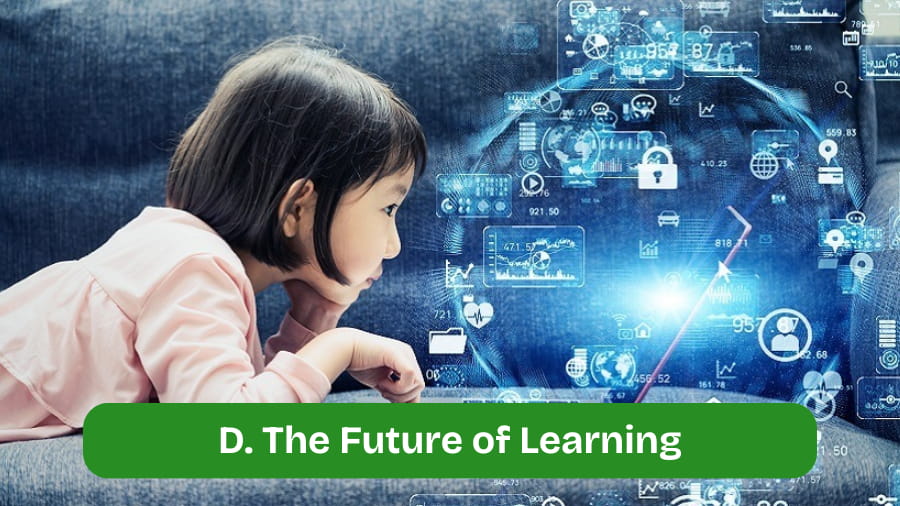
These illustrations highlight the direction AI is taking and the significant shifts it may bring about.
32. Customized Textbooks – AI is capable of producing textbooks that are suited to the interests and reading levels of individual students.
33. Real-time Translation – Students who speak different languages can benefit from AI’s ability to translate teacher content instantly.
34. Emotional AI – AI is able to read a student’s tone of voice and facial expressions to determine whether they are bored, perplexed, or irritated, and then notify the instructor.
35. Developing Digital Assistants – Similar to a personal coach, each student could have an AI digital assistant that supports them in their academic endeavors.
36. AI in Homework – By condensing lengthy articles or identifying the most pertinent information, AI could assist students with challenging research.
37. AI to Identify Learning Disabilities – By examining a student’s learning habits, AI may be able to assist educators and medical professionals in spotting learning disability symptoms early.
38. Lifelong Education AI – By recommending programs and materials according to their professional objectives, AI may assist people in discovering new skills to acquire throughout their lives.
39. AI for Global Education – By removing geographical boundaries, AI can assist in bringing together students from various nations to collaborate on projects.
The Disadvantages and Challenges of AI in Education
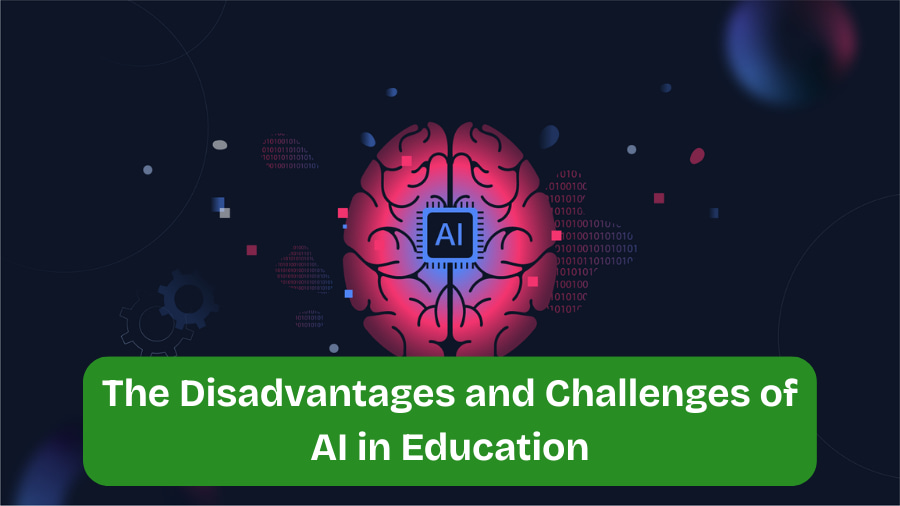
Even though there are many advantages, we also need to consider the disadvantages of AI in education –
1. Privacy Issues – For AI to function effectively, a large amount of student data must be gathered. This calls into question the ownership of that data and its security. Clear regulations are necessary to safeguard the privacy of students.
2. The Price – AI technology can be highly costly. This could result in a greater educational disparity since only affluent schools and students would have access to it.
3. Absence of Human Connection – Although AI can be an excellent tutor, it cannot take the place of a good teacher in terms of empathy, support, and a personal connection. This crucial point is always included in a good essay about how AI helps in education essay.
4. AI bias – Unfair decisions may be made by the AI if it is trained on biased data. An AI that grades essays, for instance, might be unjust if it were trained on only one set of student essays.
The Future of AI in Education
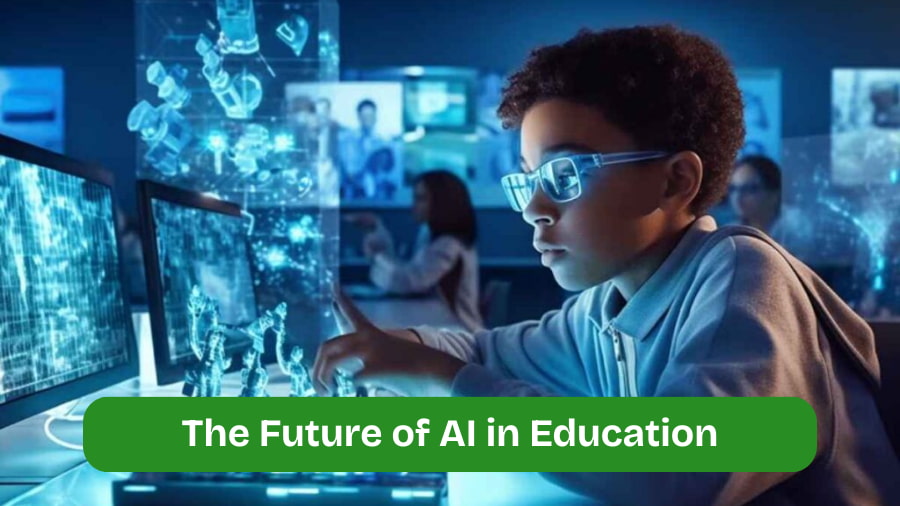
Machines taking over classrooms is not the future of AI in education. It concerns a strong partnership between educators and technology. Teachers can concentrate on what they do best—inspiring, advising, and mentoring students—while AI takes care of the monotonous work and offers data-driven insights.
Everyone will benefit from increased effectiveness, accessibility, and personalization in education as a result of this collaboration. And in this new world, websites like EDHIPPO ACADEMY PRIVATE LIMITED will be crucial in guiding parents and students through this exciting new era and locating the best schools that are utilizing technology to get students ready for the future.
The ability to envision a new type of classroom, where each student receives the attention they require to succeed, is what makes artificial intelligence in education so significant.

